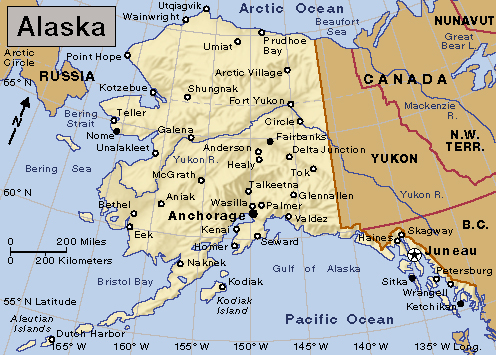Ketchikan, << KEHCH uh `kan` >> (pop. 8,192), lies on Revillagigedo Island near Alaska’s southernmost point. It is often the first port of call in Alaska for ships and ferries sailing up the Inside Passage, a scenic water route between Washington state and Alaska.

Ketchikan’s economy is based on commercial and sport fishing, government services, tourism, and wood products manufacturing. Hundreds of thousands of cruise ship passengers stop in Ketchikan each year. The city has a mild maritime climate—that is, weather strongly influenced by a nearby ocean. Temperatures range from about 30 to 40 °F (–1 to 4 °C) in January to 51 to 64 °F (11 to 18 °C) in July. It is one of the wettest places in North America, with average annual precipitation measuring more than 140 inches (355 centimeters).
Tlingit Indians originally inhabited the Ketchikan area. Today, they make up about one-fifth of the area’s residents. White settlers established Ketchikan as a permanent settlement in 1884. In 1887, the building of the area’s first cannery made Ketchikan a fishing town. In the 1890’s, the town became a supply base for miners during the gold rush to the Klondike region of northwestern Canada. It was incorporated in 1900. In 1927, Ketchikan’s salmon canning industry reached its peak. With a population of about 6,000, Ketchikan briefly became Alaska’s largest city. Canning declined in the 1930’s. The harvesting and processing of timber was the town’s major industry from the 1940’s to the 1990’s, when most of the area’s mills shut down.
